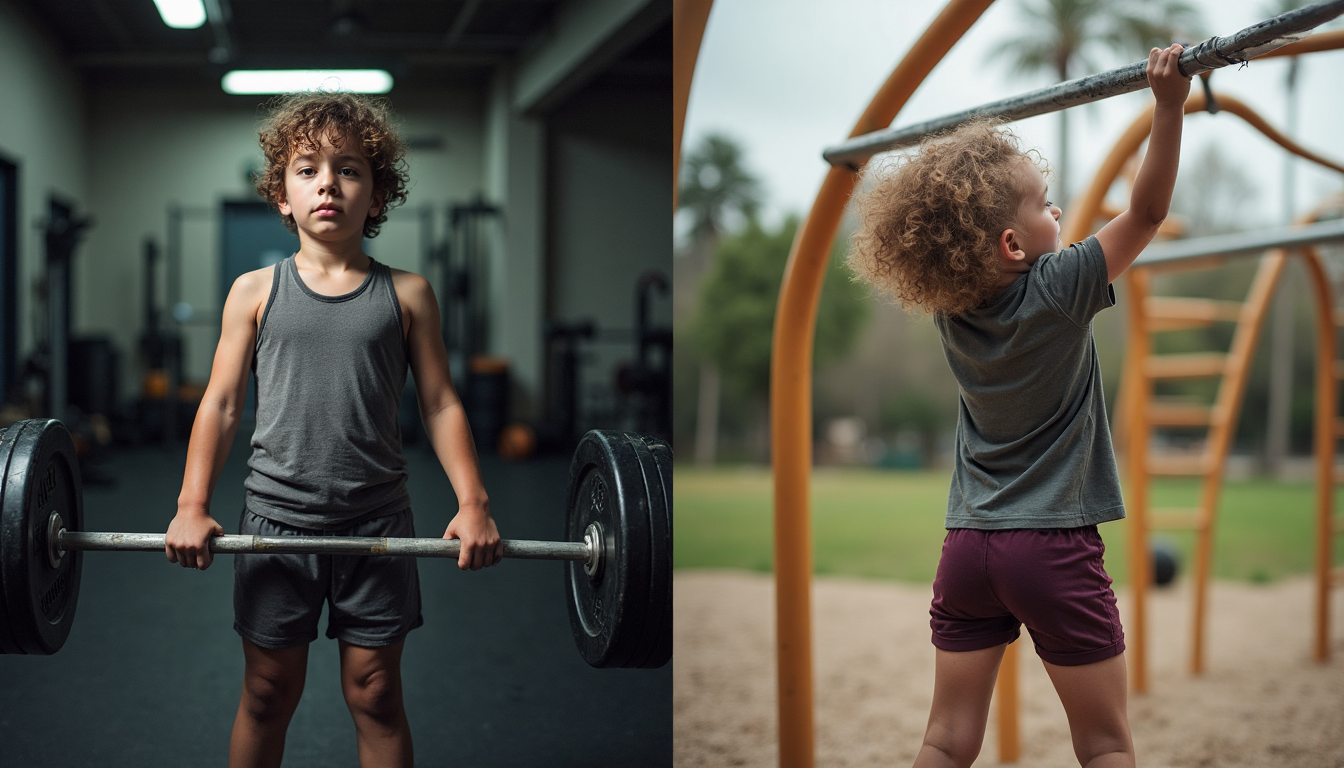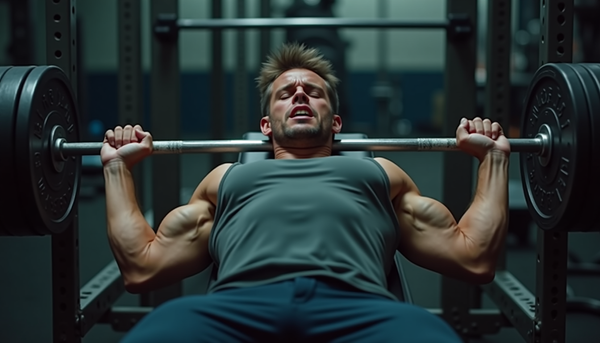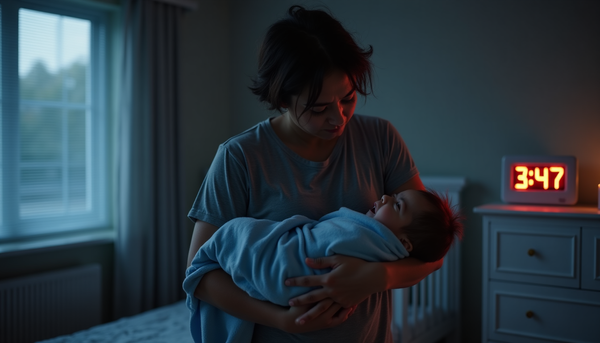We're Screwing Up Our Kids (And Ourselves) With Athletic Development

Alright, let me start with something that's gonna ruffle some feathers: Most youth athletic development programs are creating future physical therapy patients, not elite athletes.
Yeah, I said it. And before you start typing angry comments, hear me out.
I used to be one of those coaches. You know the type - throwing adult training programs at 12-year-olds because "if it works for college athletes, it'll make these kids even better!" I was essentially creating miniature bodybuilders and powerlifters, thinking I was developing the next generation of sports stars.
Spoiler alert: I wasn't.
The Wake-Up Call That Changed Everything
Three years ago, I watched one of my "star" athletes - a kid who'd been crushing it in our program since age 10 - completely burn out at 16. Not just physically, but mentally. He went from loving every sport he touched to barely wanting to walk up stairs. That's when I realized I might be part of the problem.
Enter Rick Howard and his work on Long-Term Athletic Development (LTAD). This guy literally wrote the book on it - well, the NACA position stand, which is basically the bible of youth development. And what I learned from diving into his research completely flipped my understanding of what athletic development should actually look like.
The Frankenstein Approach to Youth Training
Here's what most of us are doing wrong: We're taking bits and pieces from different training methodologies - some powerlifting here, some bodybuilding there, maybe some CrossFit thrown in for good measure - and calling it "functional youth training."
It's like creating a Frankenstein monster, except instead of using different body parts, we're using different training philosophies that were never meant to work together, especially not for developing bodies.
The result? Kids who can squat their bodyweight but can't climb a rope. Athletes who dominate in the weight room but look like robots when they try to change directions on the field. Young bodies that are strong in very specific patterns but completely unprepared for the chaotic, multi-planar demands of actual sports.
But here's the kicker - this broken approach doesn't just mess up kids. It's screwing up how we think about athleticism for our entire lives.
What Rick Howard's Research Actually Reveals
Howard's work on LTAD isn't just about creating better young athletes. It's about understanding that athletic development is a lifelong process with distinct phases, each with specific goals and training focuses.
Think about this: When did we decide that athleticism has an expiration date? When did we collectively agree that being 35 means you should give up on getting better at movement?
The LTAD model breaks development into stages, but here's what most people miss - it doesn't end when you finish high school or college. Howard's research suggests we should be thinking about athletic development "from cradle to grave" (hence that podcast title that got me thinking about all this).
The Early Years: Movement Literacy, Not Strength
Ages 6-9 should be about movement vocabulary. These kids should be learning to crawl, climb, throw, catch, balance, and change directions. Instead, we're teaching them to bench press.
I've seen 8-year-olds who can't do a proper bear crawl being taught barbell squats. It's like trying to teach calculus to someone who doesn't know basic addition.
The Specialization Trap (Ages 10-14)
This is where we really screw things up. Sports specialization is killing our kids' athletic development. Howard's research backs up what many of us have observed: early specialization leads to higher injury rates, earlier burnout, and actually decreases the chances of elite performance later on.
But parents are terrified their kid will "fall behind" if they're not on a travel team by age 10. Meanwhile, the most successful professional athletes usually played multiple sports well into high school.
The Power Development Window (Ages 15-18)
Here's where strength training actually becomes important. But even then, it should be about developing power and speed, not just grinding through heavy singles.
Too many high school programs look like powerlifting meets. Kids are maxing out constantly instead of learning to express strength quickly and efficiently.
The Lifetime Athleticism Mindset Shift
But here's where Howard's "cradle to grave" concept really hit me. LTAD doesn't stop when organized sports end. It evolves.
Think about the average 40-year-old. They've completely abandoned any concept of athletic development. They might hit the gym occasionally, but there's no progression, no skill development, no thought about maintaining or improving movement quality.
What if we approached adult fitness with the same developmental mindset we should be using with kids?
Ages 25-40: Maintaining and Building
This should be about maintaining the movement patterns you built in youth while adding functional strength. Instead, most people are either completely sedentary or doing random workouts with no progression or purpose.
Ages 40-60: Adaptation and Resilience
Your body's changing, but that doesn't mean your athletic development stops. It means it adapts. Maybe you're not going to set new sprint PRs, but you can absolutely improve your movement quality, balance, and functional strength.
Ages 60+: Vitality and Independence
Athletic development in this phase is about maintaining independence and quality of life. But it's still athletic development. It's still progressive. It's still purposeful.
The Real-World Application
So what does this actually look like in practice?
For Parents: Stop trying to create the next LeBron James when your kid is 8. Focus on fun, diverse movement experiences. Let them try everything. The goal is to create a movement-rich environment, not a training camp.
For Youth Coaches: Your job isn't to make kids stronger. It's to make them better movers who happen to get stronger along the way. Big difference.
For Adult Athletes: Start thinking developmentally again. What movement patterns do you need to work on? What athletic qualities need attention? Just because you're not playing organized sports doesn't mean you can't continue developing athletically.
For Everyone: Stop thinking about fitness as maintenance mode and start thinking about it as continued development.
The Uncomfortable Truth
Here's what really bugs me about how we approach athletic development: We've turned it into a commodity instead of a lifelong practice.
Parents drop thousands on specialized training for 10-year-olds while completely neglecting their own physical development. Coaches focus on short-term performance gains instead of building robust, adaptable athletes. Adults treat exercise like medicine they have to take instead of skills they get to develop.
Howard's work reminds us that athletic development is a skill, an art, and a science that should evolve throughout our entire lives. It's not about peaking at 18 and then slowly declining until we die.
What You Can Do Starting Tomorrow
If you're a parent:
- Prioritize play over performance
- Encourage multiple sports until at least 14
- Model lifelong athletic development yourself
- Focus on effort and improvement, not outcomes
If you're a coach:
- Actually learn about developmental stages instead of just copying what college programs do
- Emphasize movement quality over load progression
- Remember that your job is to develop humans, not just athletes
If you're an adult who's given up on athletic development:
- Pick one movement pattern to improve this month
- Try a new physical skill (martial arts, gymnastics, climbing)
- Think progression, not just maintenance
- Stop making age an excuse for poor movement
The Bottom Line
Rick Howard's research on LTAD isn't just about creating better young athletes. It's about reimagining what human physical development can look like when we actually understand the process.
We're failing our kids by rushing them through developmental stages. We're failing ourselves by thinking athletic development ends when formal sports participation stops.
The solution isn't more complex training programs or earlier specialization. It's actually understanding and respecting the developmental process that should continue from cradle to grave.
Your move: What's one thing you're going to do differently this week to support proper athletic development - whether for yourself, your kids, or the athletes you work with?
Drop a comment and let me know. And if you think I'm completely off base here, I want to hear that too. The only way we get better at this stuff is by having honest conversations about what's actually working and what's not.
What stage of athletic development are you in right now, and what's your biggest challenge with long-term thinking versus short-term results?




